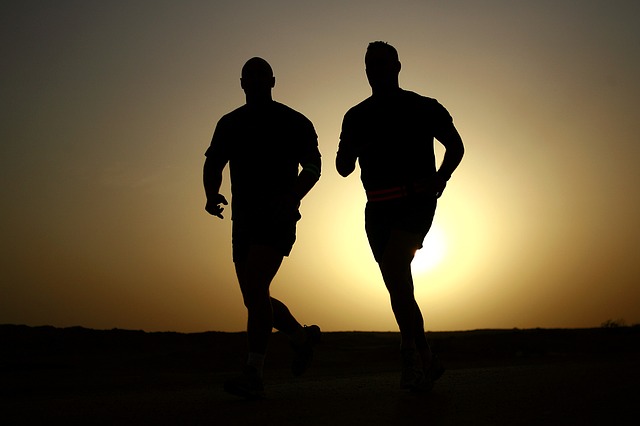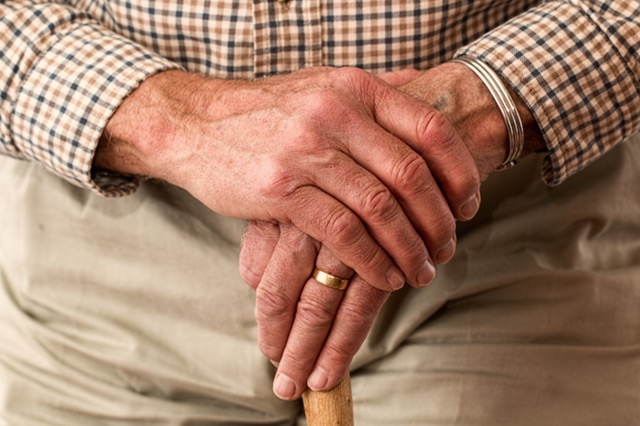Latest News and Information
Physical Therapist in Wyoming Explains the Difference Between Stretching and Warming Up
March 22, 2017
If you’re an active person, you’ve probably heard that you need to stretch and warm up before a workout, but do you know why? Many people assume that stretching and warming up are the same, but according to a physical therapist in Wyoming, they’re actually quite different. Here’s what you need to know about both of these activities:
The American College of Sports Medicine recommends that you stretch at least two times per week, and even more if you are elderly or exercising on a daily basis. It is best to think of stretching as something that should be part of your everyday life instead of limiting it to only before and after workouts. Learn how to stretch here.
Although stretching and warming up both increase the flexibility of your muscles, warming up goes one step further by getting your whole body prepared for the workout. So, the next time you plan on working out, start off with low intensity cardio by speed walking or going for a slow jog. It’s best to warm up for about 10-15 minutes so your heart rate and temperature have enough time to increase and get your body ready for the work ahead. Getting into the habit of warming up before you exercise can keep you healthy and injury-free!
At North Platte Physical Therapy, we’re dedicated to helping clients prevent injuries as they enjoy their favorite physical activities. But accidents happen, so if you do injure yourself while exercising or because of an accident, contact North Platte Physical Therapy to learn more about how we can help you recover. Our staff is praised throughout the Wyoming, and Nebraska areas for our commitment to our clients. We can fulfill comprehensive physical therapy services, and would be happy to customize a treatment plan for your personal needs.
Read More...
Stretching
Stretching on a regular basis can help improve your flexibility and increase your range of motion. Additionally, stretching can relieve tension that you may be holding in your muscles and make you feel less stressed out. It can also help you keep your muscles loose so you don’t feel any aches or pains after a tough workout. If you are experiencing pain related to bad posture, stretching can also help you realign your body so you can correct your posture problems and prevent future pain.The American College of Sports Medicine recommends that you stretch at least two times per week, and even more if you are elderly or exercising on a daily basis. It is best to think of stretching as something that should be part of your everyday life instead of limiting it to only before and after workouts. Learn how to stretch here.
Warming Up
Although many athletes often say they injured themselves because they forgot to stretch prior to a workout, they could be mistaken. Many injuries are actually caused by not properly warming up. What is warming up? Before engaging in any type of physical activity, you should get your body ready by starting off slow to gently engage each group of muscles and prepare them for a more strenuous workout. When you warm up, your heart rate starts to increase, which means your muscles will receive more nutrients and oxygen. Warming up also increases your body temperature, which leads to your muscles becoming more pliable, and thus lowering the risk of injury.Although stretching and warming up both increase the flexibility of your muscles, warming up goes one step further by getting your whole body prepared for the workout. So, the next time you plan on working out, start off with low intensity cardio by speed walking or going for a slow jog. It’s best to warm up for about 10-15 minutes so your heart rate and temperature have enough time to increase and get your body ready for the work ahead. Getting into the habit of warming up before you exercise can keep you healthy and injury-free!
At North Platte Physical Therapy, we’re dedicated to helping clients prevent injuries as they enjoy their favorite physical activities. But accidents happen, so if you do injure yourself while exercising or because of an accident, contact North Platte Physical Therapy to learn more about how we can help you recover. Our staff is praised throughout the Wyoming, and Nebraska areas for our commitment to our clients. We can fulfill comprehensive physical therapy services, and would be happy to customize a treatment plan for your personal needs.
How Children With Autism Benefit From Physical Therapy in Cheyenne WY
March 15, 2017
When you think of physical therapy, images of older or injured adults recovering from surgery probably come to mind. However, physical therapy is not just for those who are aging or injured. In fact, special needs children such as those with autism can greatly benefit from regular physical therapy in Cheyenne WY. Here’s how:
Physical therapists can also help children learn how to use these motor skills to play on their own or with others. For example, therapists can work with kids to help them understand how to climb on a playground or kick a ball in a game of soccer. They can also help them improve their motor planning skills. For instance, kids with autism may be able to climb into a swing, but they still might not be able to figure out how to pump their legs to get the swing to move. In this case, a physical therapist can focus on motor planning to fine tune these skills, which will help the child become more socialized as he learns how to play with others.
At North Platte Physical Therapy, we’re dedicated to helping clients of all ages and abilities. If you’re curious about physical therapy, contact North Platte Physical Therapy to learn more about how we can help you and your children live healthier lives. Our staff is praised throughout the Wyoming and Nebraska areas for our commitment to our clients. We can fulfill comprehensive physical therapy services, and would be happy to customize a treatment plan for your personal needs.
Read More...
Imitation Skills
Children who have autism often do not develop imitation skills on their own. What are imitation skills? When children are young, they often imitate what they see people around them doing. These skills will eventually help children socialize and learn to speak, so they are crucial to a child’s development. If your child has not mastered his imitation skills, a physical therapist can help. For example, trained physical therapists can use fun songs such as “Head, Shoulders, Knees, and Toes†to help children learn how to mimic movements. Learn more about imitation skills.Motor Skills
Children with autism typically have limited motor skills, which makes it difficult for them to navigate through their daily lives. A physical therapist can work one-on-one with affected children to help them improve their balance and develop the muscle strength they need to perform daily activities. After attending regular physical therapy sessions, children with autism may see improvements in their ability to sit upright, walk, run, and jump without assistance.Physical therapists can also help children learn how to use these motor skills to play on their own or with others. For example, therapists can work with kids to help them understand how to climb on a playground or kick a ball in a game of soccer. They can also help them improve their motor planning skills. For instance, kids with autism may be able to climb into a swing, but they still might not be able to figure out how to pump their legs to get the swing to move. In this case, a physical therapist can focus on motor planning to fine tune these skills, which will help the child become more socialized as he learns how to play with others.
Posture
If you’ve ever seen a physical therapist after an injury, you know the importance of good posture. Practicing good posture can prevent painful injuries caused by slouching your shoulders or hunching your back. Unfortunately, children with autism often suffer from generalized joint hypermobility (GJH), which can cause weak muscles, and therefore bad posture. A physical therapist can help by correcting any misalignments that are often found in the postures of children with autism and teaching them the importance of sitting up straight to elongate their spines.At North Platte Physical Therapy, we’re dedicated to helping clients of all ages and abilities. If you’re curious about physical therapy, contact North Platte Physical Therapy to learn more about how we can help you and your children live healthier lives. Our staff is praised throughout the Wyoming and Nebraska areas for our commitment to our clients. We can fulfill comprehensive physical therapy services, and would be happy to customize a treatment plan for your personal needs.
How New Moms Can Benefit From Physical Therapy in Casper, WY
March 8, 2017
Are you about to give birth or have you recently welcomed a child into the world? Congratulations! In between late night feedings and diaper changes, you’re probably struggling to find time for yourself. But, one thing you should definitely make time for after childbirth is physical therapy in Casper WY. Here are some of the many ways new moms can benefit from physical therapy:
At North Platte Physical Therapy, we’re dedicated to helping new moms stay healthy and prevent injuries. If you have any questions, contact North Platte Physical Therapy to learn more about how we can help you after you give birth to a child. Our staff is praised throughout the Wyoming and Nebraska areas for our commitment to our clients. We can fulfill comprehensive physical therapy services, and would be happy to customize a treatment plan for your personal needs.
Read More...
Bye, bye, back pain.
It’s no secret that pregnancy can cause low back pain, but did you know this pain can continue after you’ve given birth? If you’re sick of experiencing back pain on a daily basis, get in touch with a physical therapist to discuss your options. Physical therapists can create a customized treatment plan depending on the cause and location of your back pain. Instead of treating pain with medication, physical therapists will use methods such as massages, gentle workouts, and behavioral modifications.Solve incontinence issues.
Many women experience incontinence issues after giving birth, which can be difficult to adjust to, not to mention embarrassing to talk about. But, you have nothing to fear, because a physical therapist can help you manage this condition. A physical therapist can help you strengthen your pelvic floor using kegel exercises, myofascial release techniques, and manual therapy techniques. After you complete the recommended treatment plan, you should see a huge improvement in your ability to control your bladder and bowels. Learn more about incontinence during pregnancy and after childbirth.Prevent C-section scar complications.
If you had a C-section, ask your physician for a referral to a physical therapist as soon as possible. As scar tissue begins to form, it may start to adhere to other tissue or even worse, organs underneath your skin. If this happens to you, you may experience a number of different complications such as low back pain, pelvic pain, pain during intercourse, and frequent urination. How can a physical therapist help? Massaging the C-section scar can help direct the scar tissue and ensure it grows in the correct areas so it does not cause you any long-term pain. It’s possible that scar tissue will continue to grow for up to two years after you give birth, so it’s important to start physical therapy early and stick with it until you have fully recovered.Prepare you for future pregnancies.
Are you planning on having more children in the future? Physical therapy can help you strengthen your core muscles, adjust your posture, prepare your pelvic floor, and learn new breathing techniques so you have a smooth pregnancy and delivery. ÂAt North Platte Physical Therapy, we’re dedicated to helping new moms stay healthy and prevent injuries. If you have any questions, contact North Platte Physical Therapy to learn more about how we can help you after you give birth to a child. Our staff is praised throughout the Wyoming and Nebraska areas for our commitment to our clients. We can fulfill comprehensive physical therapy services, and would be happy to customize a treatment plan for your personal needs.
Physical Therapy in Casper WY Can Help You Learn to Use Walking Aids
March 1, 2017
Walking aids such as canes and walkers are used to help senior citizens stay balanced on their feet. But, if you fail to use the walking aid correctly, you could cause another painful injury even if you never experience a fall. How can you protect yourself from the pain of improperly using a walking aid? According to the experts at North Platte Physical Therapy in Casper WY, you should follow these tips:
At North Platte Physical Therapy, we’re dedicated to helping our clients learn how to properly use walking aids to prevent falls. But accidents happen, so if you do injure yourself during a fall, contact North Platte Physical Therapy to learn more about how we can help you recover. Our staff is praised throughout the Wyoming and Nebraska areas for our commitment to our clients. We can fulfill comprehensive physical therapy services, and would be happy to customize a treatment plan for your personal needs.
Read More...
Adjust the height.
Walking aids need to be adjusted to fit your body before you begin to use them. First, take a look at the height. The top of your walking aid should be the height of your wrists when you are upright with your arms straight by your side. If it’s not at this level, you will need to adjust it. If you don’t, you could strain yourself while using your walking aid, causing pain in your wrists and arms. Also, when you reach your arm out to grip the walking aid, make sure you keep a slight bend in your elbow.Straighten your back.
It may be tempting to lean into your walking aid so it supports the majority of your body weight, but don’t do this. Keep your back straight instead of hunched over when using a cane or walker. Hunching over a walking aid will promote bad posture and will eventually lead to pain in your shoulders, upper and lower back.Hold the cane in the opposite hand.
Does it matter which hand grips your cane? Yes! Which side of your body are you experiencing pain or weakness in? If it’s your left side, then hold the cane with your right hand. This may not seem right at first. After all, shouldn’t you support the side that is weaker? No! By holding a cane with the hand opposite of your weak side, you are shifting your body weight into your stronger side instead of pushing it all to the side that is injured or weak. Learn how to choose the right cane.Check the rubber bottoms.
Walking aids are designed with thick rubber bottoms that prevent slips. But over time, these rubber bottoms begin to wear down. Some may even fall off if the walking aid is old. Without them, your walking aid is not as effective in keeping you safe, so it’s important to check them on a regular basis to ensure they are intact. If you notice that they are beginning to wear down, or if the bottoms are uneven on your walker, purchase replacements as soon as possible to protect yourself.At North Platte Physical Therapy, we’re dedicated to helping our clients learn how to properly use walking aids to prevent falls. But accidents happen, so if you do injure yourself during a fall, contact North Platte Physical Therapy to learn more about how we can help you recover. Our staff is praised throughout the Wyoming and Nebraska areas for our commitment to our clients. We can fulfill comprehensive physical therapy services, and would be happy to customize a treatment plan for your personal needs.
Adding the Proper Swimming Technique to Your Cheyenne Wyoming Physical Therapy
February 22, 2017
Swimming is a great way to get in shape, strengthen your body, and of course, have fun. It is also an excellent way to recover from painful injuries, so after you consult with your physical therapist, think about adding swimming to your physical therapy routine. The next time you plan on taking a dive into the pool, make sure you follow these tips:
At North Platte Physical Therapy, we’re dedicated to helping clients prevent injuries as they enjoy their favorite physical activities. We highly recommend adding different types of activities to keep your body limber. Contact North Platte Physical Therapy to learn more about how we can help you. Our staff is praised throughout the Wyoming and Nebraska areas for our commitment to our clients. We can fulfill comprehensive physical therapy services, and would be happy to customize a treatment plan for your personal needs.
Read More...
Kicking
When swimming, it’s recommended that you keep your legs close to each other and relax your ankles to avoid injuries. Your entire leg should be moving when you kick the water, not just your feet. Straight legs create the most powerful kicks, but it’s best to have a slight bend at the knee to avoid overextension.Posture
You probably know that good posture is important while out of the water, but did you know it’s just as important while you’re swimming? Be mindful of how you position your shoulders as you swim. Shoulders should be down and pushed back, otherwise your back may be rounded and you may be vulnerable to injuries. Keep your head forward and down while you swim to prevent neck injuries.Breathing
Don’t lift your head too far out of the water when you need to take a breath. The higher you lift your head, the more the lower half of your body will sink underneath the water. Keep one side of your face in the water when you go to take a breath, and move your face in sync with the rotation of your shoulders to prevent injuries. Many swimmers believe it is best to take a breath after every three strokes, but if you need to breathe more frequently, feel free to do so as long as you follow these tips.Turning
When you are swimming, you will eventually hit one of the pool’s walls and have to turn around without hurting yourself. Rely on your legs instead of your arms when turning around in a pool. The last two of your arm strokes before you hit a wall should end with your hands underwater by your thighs. Once you’ve reached the wall, you should tuck your body by bending the hips and knees, and plant your feet firmly onto the wall. Push your body off of the wall by straightening your legs with a great deal of force.Stretching
Swimming may feel like a recreational activity, but it’s actually a workout. It’s strongly recommended that you take the time to stretch the muscles in your shoulders, back, arms, and legs before and after you swim. See 4 post-swim stretching exercises.At North Platte Physical Therapy, we’re dedicated to helping clients prevent injuries as they enjoy their favorite physical activities. We highly recommend adding different types of activities to keep your body limber. Contact North Platte Physical Therapy to learn more about how we can help you. Our staff is praised throughout the Wyoming and Nebraska areas for our commitment to our clients. We can fulfill comprehensive physical therapy services, and would be happy to customize a treatment plan for your personal needs.




